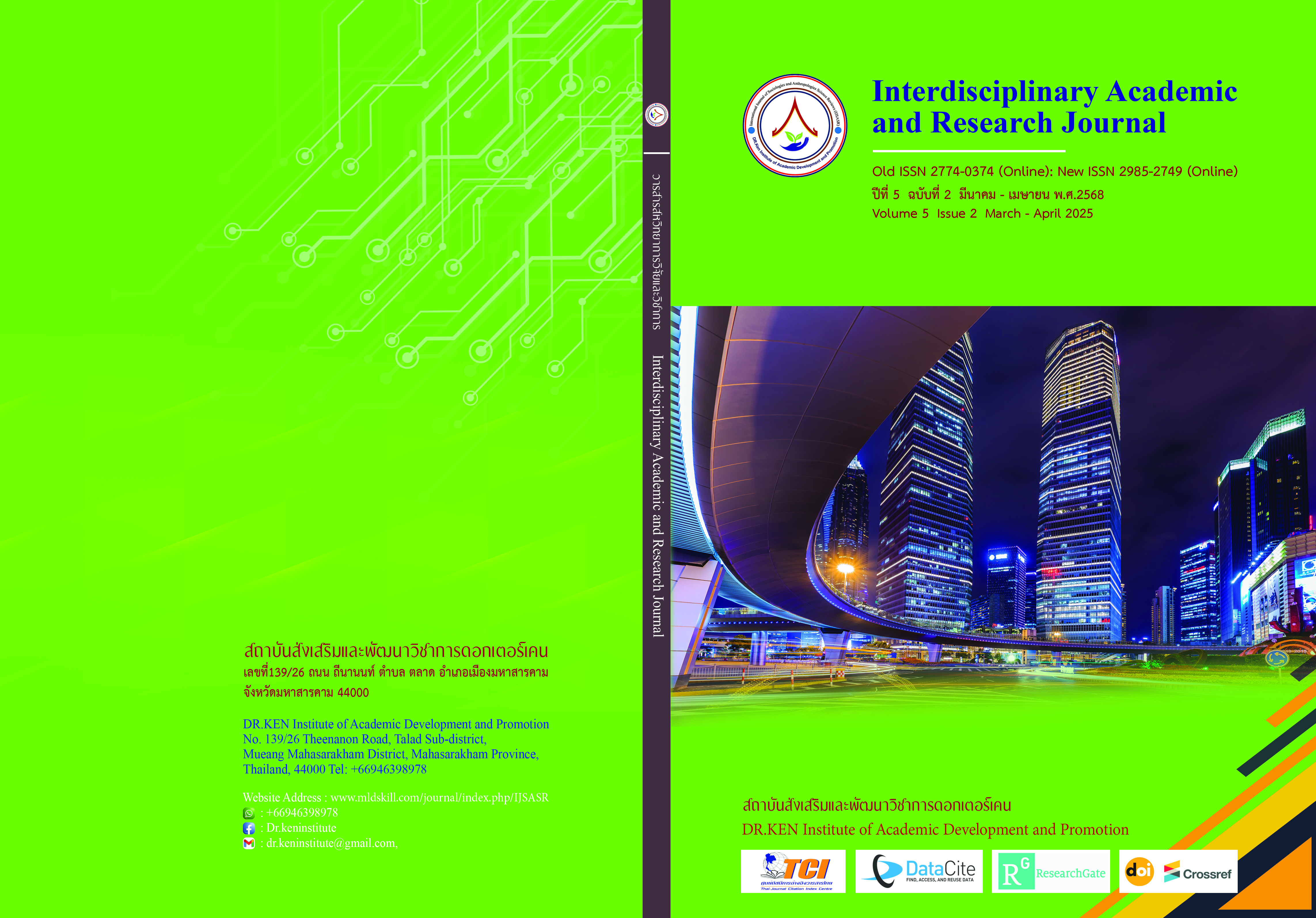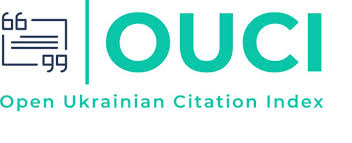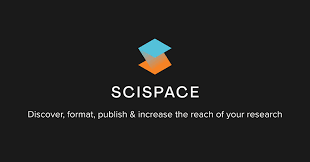Effects of Health Knowledge Promotion Program on Foot Complication Prevention in Elderly Patients with Type 2 Diabetes at Ban Kaentao Subdistrict Health Promotion Hospital, Phayakkhaphumiphisai District, Maha Sarakham Province
DOI:
https://doi.org/10.60027/iarj.2025.281777Keywords:
Health Literacy Promotion Program, Prevention of Foot Complications, Elderly with Type 2 DiabetesAbstract
Background and Objective: In the elderly healthcare operation, most of the workload still lies with public health officers. Therefore, promoting health literacy in preventing foot complications in the elderly with type 2 diabetes is essential to enhance self-care and prevent foot complications, as well as other health issues, effectively. The goals of this study were to (1) develop a health literacy promotion program for preventing foot complications among the elderly with type 2 diabetes. And (2) to evaluate the effectiveness of a health literacy promotion program in preventing foot complications among elderly patients with type 2 diabetes at Ban Kaen Thao Subdistrict Health Promoting Hospital in Phayakkhaphumiphisai District, Maha Sarakham Province.
Research Methodology: This study employs a quasi-experimental research design. The objective is to develop and study the results of a health literacy promotion program in preventing foot complications in the elderly with type 2 diabetes. The sample group consisted of 98 elderly people with type 2 diabetes, selected by purposive sampling and divided into 2 groups: an experimental group and a comparison group, 27 people per group, according to the inclusion and exclusion criteria. Data were collected using a questionnaire. Data were analyzed using descriptive statistics, and the mean scores before and after the experiment were compared using a Paired sample t-test and between the experimental and comparison groups using an Independent t-test.
Results: It was found that the experimental group had a higher mean knowledge score after joining the program than before joining the program, with a statistically significant difference (p-value = 0.036). The experimental group had higher health literacy. After joining the program, it was higher than before joining the program, and there was a statistically significant difference (p-value=0.047). And the experimental group had health behaviors before and after joining the program that were statistically significantly different (p-value=0.001). And when comparing the experimental group with the comparison group, it was found that the experimental group had higher knowledge about diabetes than the comparison group, which was statistically significantly different. Mean Difference=0.114, 95% CI = (0.054 to 0.175), P-value<0.001, and the experimental group had a higher mean health literacy score than the comparison group, which was statistically significantly different. Mean Difference=0.447, 95% CI = (0.109 to 0.785), P-value=0.01, and the experimental group had a higher mean health behavior score than the comparison group, which was statistically significantly different. Statistically significant, Mean Difference=0.309, 95% CI = (0.059 to 0.560), P-value=0.016.
Conclusion: Therefore, the health literacy promotion program for preventing foot complications in the elderly with type 2 diabetes can increase the knowledge, health literacy, and health behavior in preventing foot complications in the elderly with type 2 diabetes.
References
กรมอนามัย กระทรวงสาธารณสุข. (2545). ตารางแสดงคุณค่าทางโภชนาการของอาหารไทย. กรุงเทพฯ:โรงพิมพองคการเภสัชกรรม.
จันทร์ทิพย์ กาญจนศิลป์, นฤมล คูณเจริญรัตน์, อัจฉรียา สีหะวงค์ และ เบญจรัตน์ จิตทยานันท์. (2566). ปัจจัยเสี่ยงของภาวะเลือดเป็นกรดจากกรดแลคติกในเลือดสูงเนื่องจากยาเม็ทฟอร์มินในคนไข้เบาหวานชนิดที่ 2 ที่ใช้ยาเม็ท ฟอร์มิน. วารสารไทยเภสชั ศาสตรแ์ ละวทิ ยาการสุขภาพ. 18(1), 84-89.
จิรปรียา บุญสงค์, จีระศักดิ์ เจริญพันธ์ และ จิราพร วรวงศ์. (2559). ผลของโปรแกรมส่งเสริมพฤติกรรมการป้องกันภาวะแทรกซ้อนทางเท้าของผู้ป่วยโรคเบาหวานชนิดที่ 2 ที่มารับบริการที่โรงพยาบาลส่งเสริมสุขภาพตำบลดงขวาง อำเภอเมือง จังหวัดนครพนม. วารสารสำนักงานป้องกันควบคุมโรคที่ 7 จังหวัดขอนแก่น. 23(2), 46-59.
เทพ หิมะทองคำ, รัชตะ รัชตะนาวิน, และ ธิดา นิงสานนท์. (บรรณาธิการ). (2554). ความรู้เรื่องโรคเบาหวานฉบับสมบูรณ์. พิมพ์ครั้งที่ 11, กรุงเทพฯ: วิทยพัฒน์.
นิธิพงศ์ ศรีเบญจมาศ. (2562). ผลของโปรแกรมส่งเสริมสุขภาพเท้าต่อพฤติกรรมการดูแลเท้า ของผู้ป่วยเบาหวานชนิดที่ 2 อำเภอเมือง จังหวัดสุโขทัย. วารสารไทยเภสัชศาสตร์และวิทยาการสุขภาพ. 14(4), 175-181.
ราตรี ทองคำ (2565). ประสิทธิผลของการส่งเสริมความรอบรู้ด้านสุขภาพต่อพฤติกรรมการดูแลตนเองในผู้ป่วยเบาหวานชนิดที่ 2 จังหวัดลพบุรี. วารสารโรงพยาบาลสิงห์บุรี. 30(3), 86-99.
แววตา เพ็งบูรณ์ และวีรวรรณ เกิดทอง (2567). ผลของโปรแกรมปรับเปลี่ยนพฤติกรรมต่อพฤติกรรมการควบคุมอาหาร ดัชนีมวลกาย และค่าน้ำตาลสะสม ในเลือดของผู้ป่วยโรคเบาหวานชนิดที่ 2 ที่น้ำหนักเกิน คลินิกโรคเรื้อรัง โรงพยาบาลท่าชนะ จังหวัดสุราษฎร์ธานี. Retrieved from: https://srth.go.th/research/file/20240708152521-79_2567%20แววตา%20เพ็งบูรณ์.pdf
สมเกียรติ โพธิสัตย์, วรรณี นิธิยานันท์, อัมพา สุทธิจำรูญ, และ ยุพิน เบ็ญจสุรัตน์วงศ์ (บรรณาธิการ), (2556). การให้ความรู้ เพื่อจัดการโรคเบาหวานด้วยตนเอง (หน้า 103-112). นนทบุรี: ชุมนุมสหกรณ์การเกษตรแห่งประเทศไทย.
สุปรีชา แก้วสวัสดิ์, อรฤทัย อับดุลหละ และ นเรศักดิ์ แก้วห้วย. (2563). การวิจัยกึ่งทดลอง: งานประจำสู่การวิจัยกึ่งทดลอง สำหรับนักสาธารณสุข.วารสารสมาคมวิชาชีพสุขศึกษา. 35(1), 30-39.
สุมัทนา กลางคาร และวรพจน์ พรหมสัตยพรต. (2553). หลักการวิจัยทางวิทยาศาสตร์สุขภาพ.พิมพ์ครั้งที่ 6 มหาสารคาม: สารคามการพิมพ์.
สุเมธ นาจรัส และคณะ. (2566). ผลของโปรแกรมสร้างเสริมความรอบรู้ด้านสุขภาพในกลุ่มเสี่ยงโรคเบาหวานชนิดที่ 2 กับการควบคุมระดับน้ำตาลในเลือด ระดับตำบลของจังหวัดพะเยา. คณะแพทยศาสตร์ มหาวิทยาลัยพะเยา
สุรชัย อยู่สาโก. (2550). พฤติกรรมการดูแลตนเองของผู้สูงอายุในชมรมผู้สูงอายุ เทศบาลเมืองท่าพระ – พระแท่น อำเภอท่ามะกา จังหวัดกาญจนบุรี. วิทยานิพนธ์ปริญญาศึกษาศาสตรมหาบัณฑิต สาขาวิชาพัฒนศึกษา มหาวิทยาลัยศิลปกร.
หนึ่งฤทัย จันทร์อินทร, อภิญญา ศิริพิทยาคุณกิจ และพรทิพย์ มาลาธรรม. (2558). พฤติกรรมการดูแลเท้าของผู้สูงอายุที่เป็นเบาหวานชนิดที่ 2. Rama Nurs Journal. 2(2), 200-212.
อรุณ จิรวัฒน์กุล (2556). การนำเสนอผลต่างของการสอนด้วยขนาดอิทธิพล. วารสารวิชาการสาธารณสุข. 22(6), 935-936.
อัจฉราวดี ศรียะศักดิ์ และคณะ. (2564). การพัฒนาความรอบรู้ด้านสุขภาพเพื่อจัดการสุขภาพผู้สูงอายุที่มีภาวะเบาหวานและความดันโลหิตสูงในบริบทคลินิกหมอครอบครัว: กรณีศึกษาในจังหวัดเพชรบุรี.วารสารวิจัยระบบสาธารณสุข. 15(2), 155-173.
DeRue, D., Ashford, S., & Myers, C. (2012). Learning Agility: In Search of Conceptual Clarity and Theoretical Grounding. Industrial and Organizational Psychology, 5, 258-279. https://doi.org/10.1111/j.1754-9434.2012.01444.x
Moulik, P.K., Mtonga, R., Gill, G,V. (2023). Amputation and mortality in new-onset diabetic foot ulcers stratified by etiology. Diabetes Care. 26(2), 491-4. doi: 10.2337/diacare.26.2.491.
Nutbeam, D. (2000). Health Literacy as a Public Health Goal: A Challenge for Contemporary Health Education and Communication Strategies into the 21st Century. Health Promotion International, 15(3), 259-267.
World Health Organization. (1995). The World Health Report: 1995: bridging the gaps/report of the Director-General. World Health Organization. https://iris.who.int/handle/10665/41863
Downloads
Published
How to Cite
Issue
Section
License
Copyright (c) 2025 Interdisciplinary Academic and Research Journal

This work is licensed under a Creative Commons Attribution-NonCommercial-NoDerivatives 4.0 International License.
Copyright on any article in the Interdisciplinary Academic and Research Journal is retained by the author(s) under the under the Creative Commons Attribution-NonCommercial-NoDerivatives 4.0 International License. Permission to use text, content, images, etc. of publication. Any user to read, download, copy, distribute, print, search, or link to the full texts of articles, crawl them for indexing, pass them as data to software, or use them for any other lawful purpose. But do not use it for commercial use or with the intent to benefit any business.
















.png)


